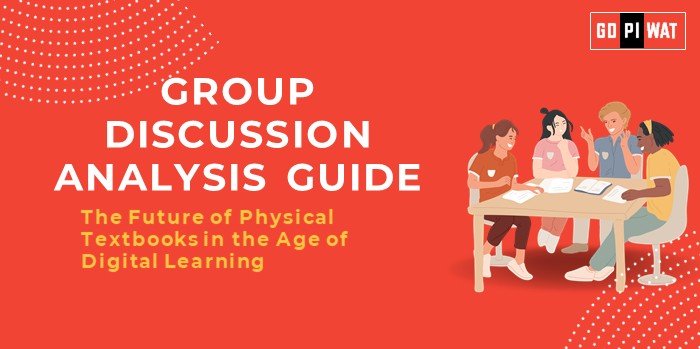📘 The Future of Physical Textbooks in the Age of Digital Learning
🌟 Introduction to the Topic
Opening Context: “As digital learning reshapes education worldwide, the role of physical textbooks faces a pivotal re-evaluation, balancing tradition with technology.”
Background: Physical textbooks have been central to education for centuries. However, the global push for digitization in learning, accelerated by the COVID-19 pandemic and advancements in e-learning platforms, questions their future. Recent trends reveal a surge in digital content consumption in education systems globally, presenting opportunities and challenges.
📊 Quick Facts and Key Statistics
📚 Digital Textbook Adoption: In the US, 40% of higher education institutions now use e-textbooks as a primary resource.
💰 Cost Savings: Digital textbooks can reduce costs by up to 60% compared to printed versions.
📖 Student Preference: 65% of students globally still prefer printed materials for deep learning, citing reduced eye strain and focus improvement.
🌍 Environmental Impact: Transitioning to e-books could save approximately 2 million trees annually in the US alone.
👥 Stakeholders and Their Roles
- 📘 Students: Users deciding the adoption based on accessibility, cost, and learning comfort.
- 🏫 Educational Institutions: Key implementers influencing curriculum integration.
- 📦 Publishers: Transitioning business models from print to digital.
- 🌐 Governments and NGOs: Driving digitization initiatives and providing infrastructure.
- 💻 Tech Companies: Innovating platforms for e-learning and digital book access.
🎯 Achievements and Challenges
🏆 Achievements
- 💰 Cost Efficiency: Reduced textbook expenses due to digital access.
- 🌐 Accessibility: E-books enable instant global access, benefiting remote learners.
- 🌳 Environmental Benefits: Lower paper usage contributes to sustainability.
⚠️ Challenges
- 🌍 Digital Divide: Limited access in rural and low-income regions.
- 👁️ Health Concerns: Prolonged screen exposure impacts eyesight and mental health.
- 🔐 Copyright and Piracy Issues: Digital formats face higher risks of intellectual property violations.
🌏 Global Comparisons
- 📚 Success: Estonia’s education system incorporates 85% digital resources.
- 📉 Challenges: Sub-Saharan Africa struggles with insufficient infrastructure for e-learning adoption.
📖 Case Study
India: Kerala launched “Digital Classrooms” with e-textbooks in 80% of schools, addressing access but highlighting gaps in teacher training.
⚖️ Structured Arguments for Discussion
Supporting Stance: “Digital textbooks are the future, offering cost savings, accessibility, and environmental benefits.”
Opposing Stance: “The shift to digital risks widening the education gap and diminishing learning quality for many.”
Balanced Perspective: “While digital textbooks offer innovation, a hybrid model is vital to balance accessibility and traditional learning benefits.”
🗣️ Effective Discussion Approaches
- Opening Approaches:
- 📈 “By 2027, the EdTech market is projected to quadruple, signifying a transformative shift in education.”
- 📖 “Despite cost benefits, 65% of students still prefer physical books for focus and retention.”
- Counter-Argument Handling: Emphasize solutions like hybrid models and targeted infrastructure investment, and highlight case studies showing balanced adoption.
🔍 Strategic Analysis of Strengths and Weaknesses
- Strengths: Cost savings, global access, environmental impact.
- Weaknesses: Digital divide, health implications.
- Opportunities: 5G and AI-enhanced digital learning platforms.
- Threats: Data security and resistance from traditionalists.
🎓 Connecting with B-School Applications
- 📚 Real-World Applications: Explore hybrid learning models in operational management.
- 💼 Sample Interview Questions:
- “What strategies can bridge the digital divide in education?”
- “How can publishers adapt to digital transformation without alienating traditional users?”
- 💡 Insights for Students: Consider EdTech innovations for internships and projects.
Achievements and Challenges
Achievements
– Cost Efficiency: Reduced textbook expenses due to digital access.
– Accessibility: E-books enable instant global access, benefiting remote learners.
– Environmental Benefits: Lower paper usage contributes to sustainability.
Challenges
– Digital Divide: Limited access in rural and low-income regions.
– Health Concerns: Prolonged screen exposure impacts eyesight and mental health.
– Copyright and Piracy Issues: Digital formats face higher risks of intellectual property violations.
Global Comparisons
– Success: Estonia’s education system incorporates 85% digital resources.
– Challenges: Sub-Saharan Africa struggles with insufficient infrastructure for e-learning adoption.
Case Study
– India: Kerala launched “Digital Classrooms” with e-textbooks in 80% of schools, addressing access but highlighting gaps in teacher training.
Structured Arguments for Discussion
– Supporting Stance: “Digital textbooks are the future, offering cost savings, accessibility, and environmental benefits.”
– Opposing Stance: “The shift to digital risks widening the education gap and diminishing learning quality for many.”
– Balanced Perspective: “While digital textbooks offer innovation, a hybrid model is vital to balance accessibility and traditional learning benefits.”
Effective Discussion Approaches
– Opening Approaches:
1. “By 2027, the EdTech market is projected to quadruple, signifying a transformative shift in education.”
2. “Despite cost benefits, 65% of students still prefer physical books for focus and retention.”
– Counter-Argument Handling:
– Emphasize solutions like hybrid models and targeted infrastructure investment.
– Highlight case studies showing balanced adoption.
Strategic Analysis of Strengths and Weaknesses
– Strengths: Cost savings, global access, environmental impact.
– Weaknesses: Digital divide, health implications.
– Opportunities: 5G and AI-enhanced digital learning platforms.
– Threats: Data security and resistance from traditionalists.
Connecting with B-School Applications
– Real-World Applications: Explore hybrid learning models in operational management.
– Sample Interview Questions:
1. “What strategies can bridge the digital divide in education?”
2. “How can publishers adapt to digital transformation without alienating traditional users?”
– Insights for Students: Consider EdTech innovations for internships and projects.


